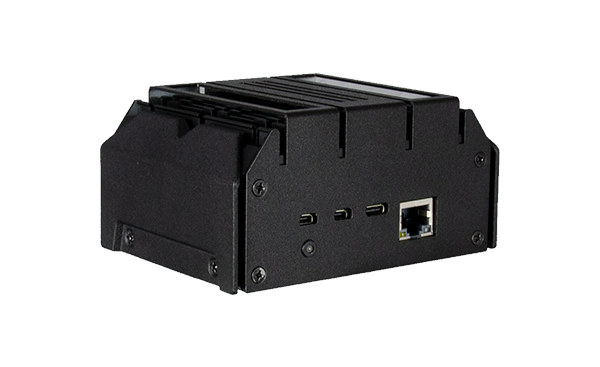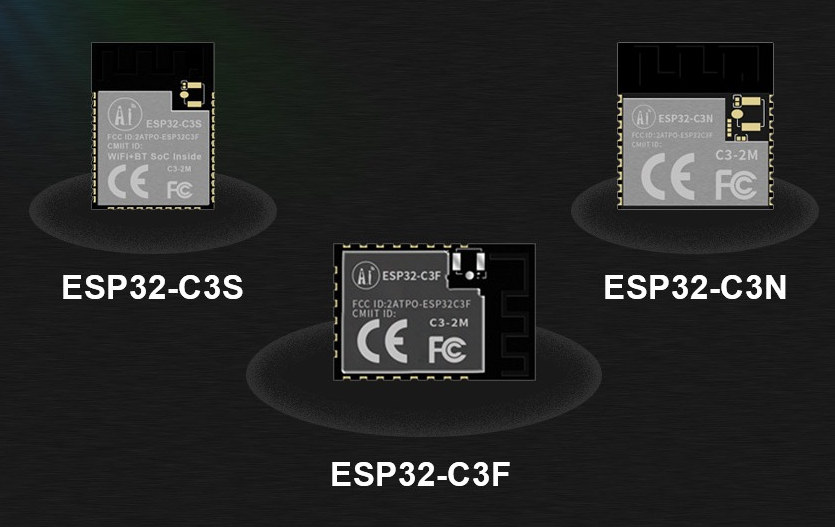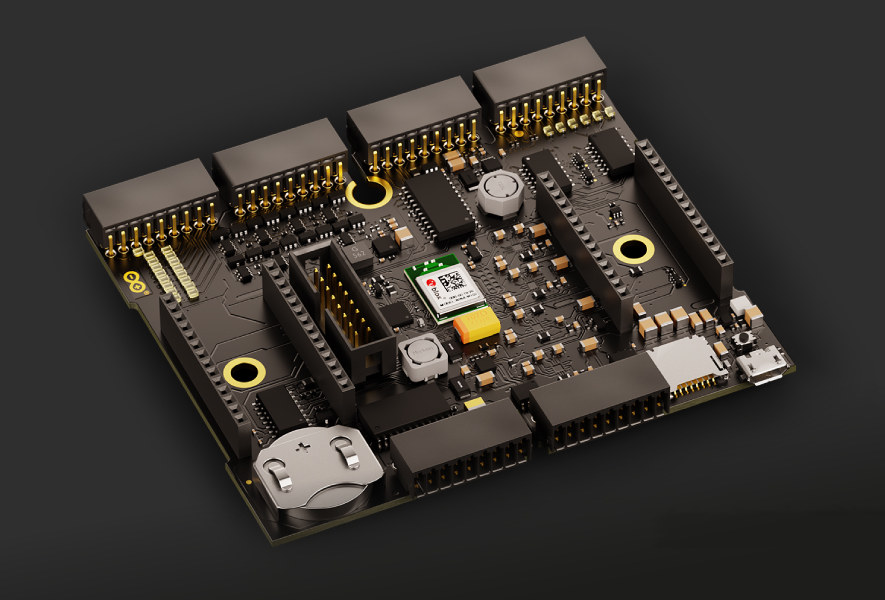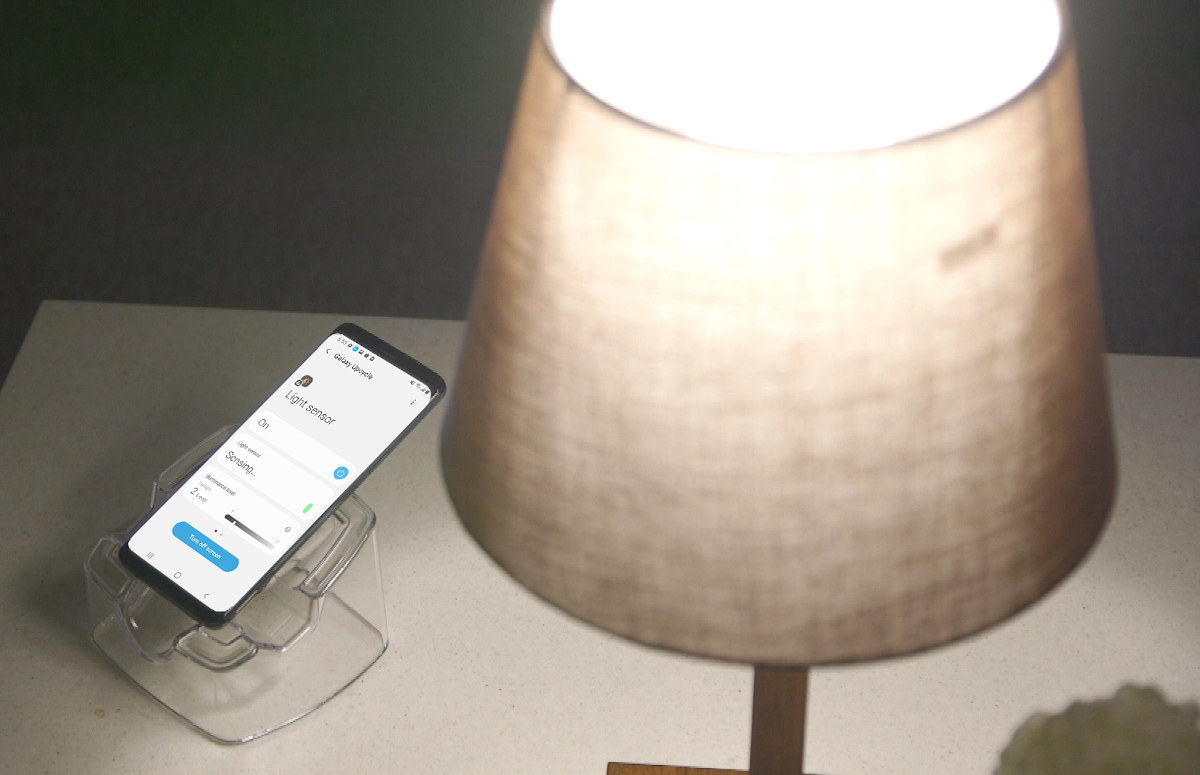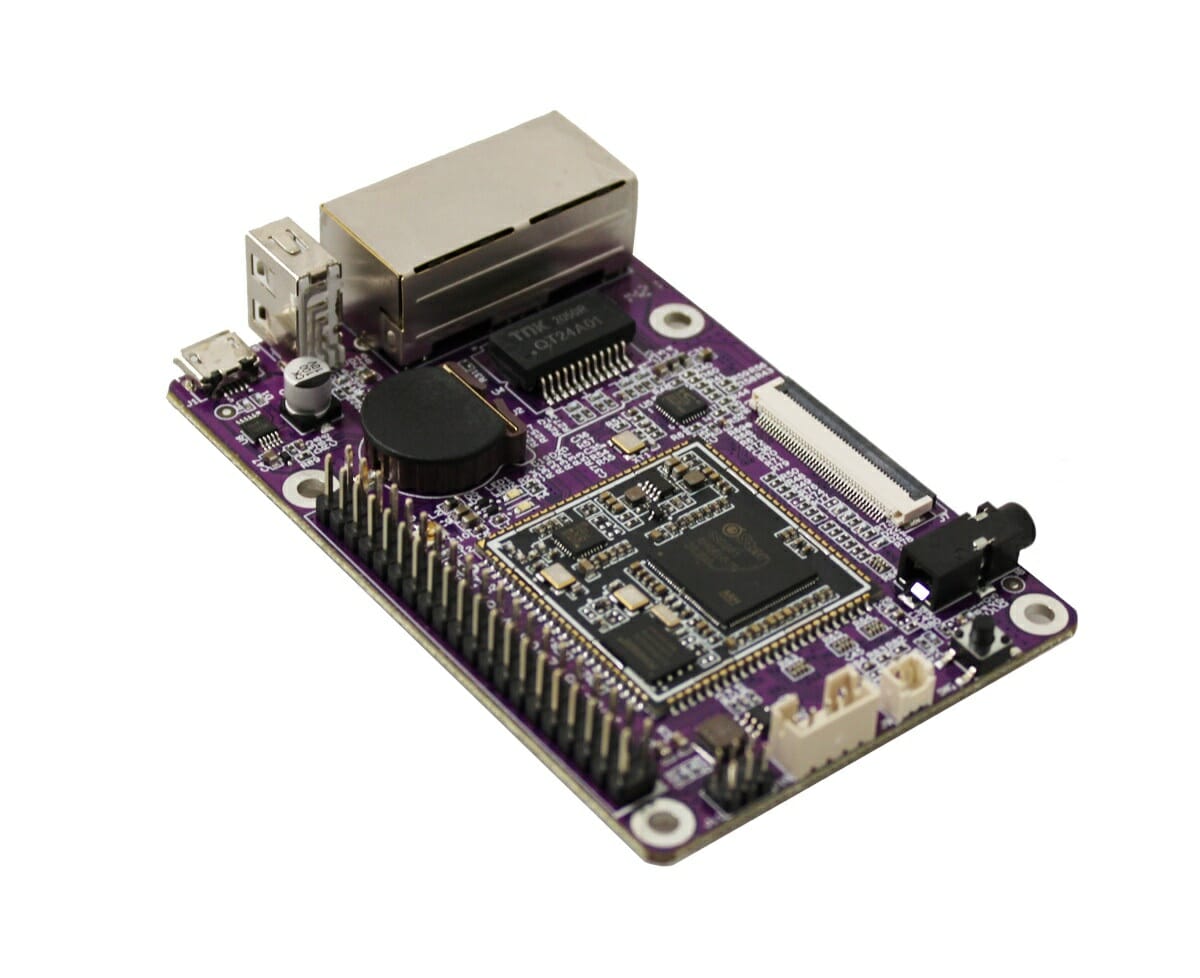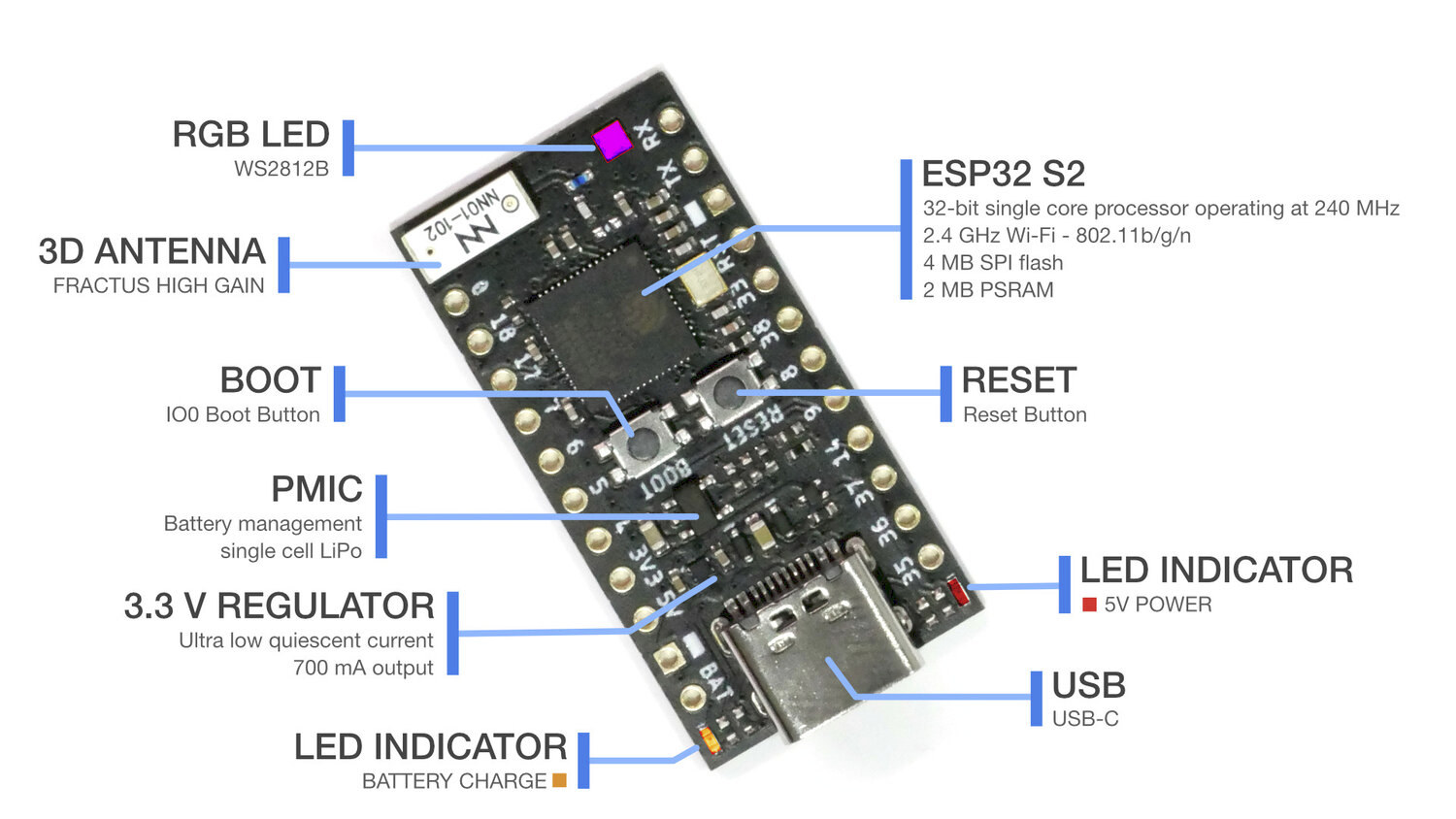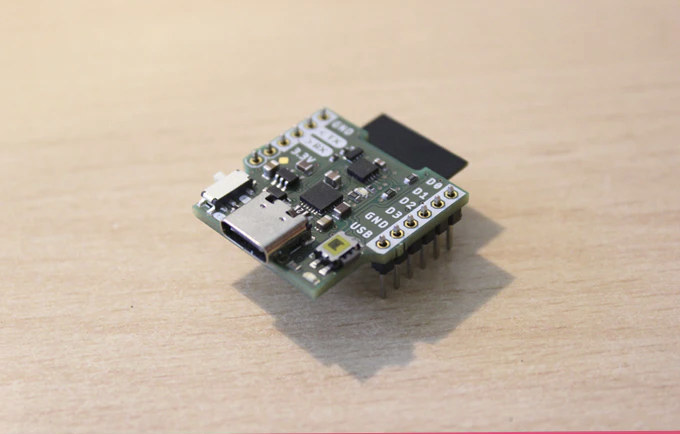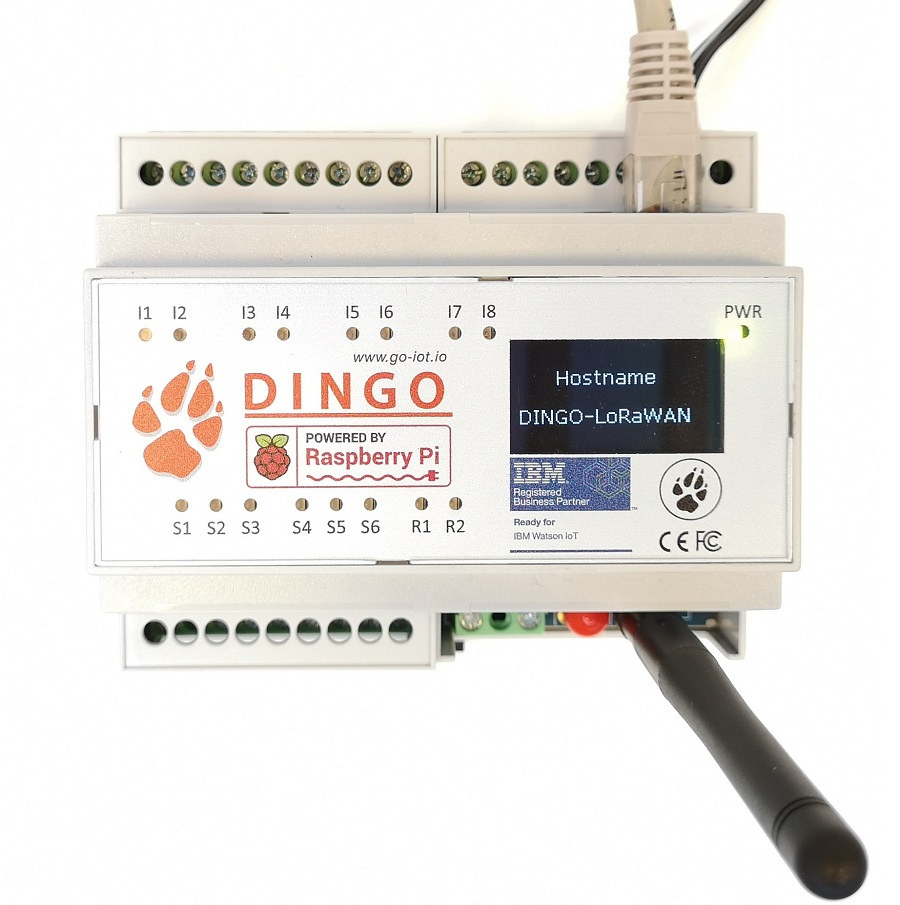Last year, Taiwan-based DFI introduced DFI GHF51 SBC based on AMD Ryzen Embedded R1000 dual-core SoC and roughly the size of a Raspberry Pi. We had the chance to test the Ryzen R1606G model with both Windows 10 Enterprise LTSC and Ubuntu 20.04. The board worked mostly to expectations except for compatibilities issues with one of my USB hard drives, some video playback issues, as well as a 3D graphics glitches in one benchmark in Ubuntu. The single board computer was designed to be integrated into the customer’s own chassis, but DFI has now launched EC90A-GH mini PC based on GHF51 SBC. The fanless system is offered with a choice of AMD Ryzen Embedded R1000-series processor with up to 8GB RAM, dual Micro HDMI output, and has recently been Ubuntu-certified by Canonical. DFI EC90A-GH preliminary specifications: SoC – AMD Ryzen Embedded R1000 Series with Radeon Vega 3 GPU; 6W to 12W […]
AI-Thinker introduces 5 ESP32-C3 modules pin compatible with ESP8266 & ESP32 modules
ESP32-C3 is the first RISC-V wireless SoC from Espressif Systems, and at the time of the initial announcement promised to cost about the same as ESP8266 but adds support for Bluetooth 5.0 LE besides 2.4 GHz WiFi, and retain software compatibility through the ESP-IDF framework. We were also told the goal was to provide ESP8266 compatible modules, and AI-Thinker has just announced five new ESP32-C3 modules compatible with earlier ESP8266 & ESP32 modules as shown in the table below. The table above is quite low resolution but that’s the best I could obtain from the company… It’s also a complete mess, not showing all alternative ESP8266 or mistaken in board sizes. So I’ll try to give a short summary of differentiating features and equivalent ESP8266/ESP32 modules: ESP32-C3F is meant to replace ESP-12F with a 24 x 16 mm form factor. It does add an IPEX connector, besides the PCB antenna. […]
Arduino unveils Edge Control board for smart agriculture
Arduino hardware and software have been used for smart agriculture applications for years, but Arduino has now launched a board part of its Arduino Pro program specifically designed for smart farming. Meet Arduino Edge Control. Powered by a Nordic Semi nRF52840 Bluetooth microcontroller, the board offers the usual digital & analog I/O’s, plus four 60/V2.5A solid-state relays, hydrostatic watermark sensor inputs, support for DC or solar power input, and can be augmented with one or two Arduino MKR boards for WiFi, 3G NB-IoT, or LoRaWAN connectivity. Arduino Edge Control specifications: MCU – Nordic Semi nRF52840 Arm Cortex-M4F microcontroller @ 64 MHz with 1MB flash, 256KB SRAM Additional storage – 2 MB QSPI flash memory, MicroSD card slot Connectivity Bluetooth LE Optional Wifi, 2G, 3G, NB-IoT, eMTC, and/or LoRaWAN via Arduino MKR board USB – Full-speed 12 Mbps micro USB port Expansion I/Os Digital Input – 6x edge-sensitive wake-up pins Digital […]
Samsung Galaxy Upcycling at Home program aims to repurpose older phones into IoT devices
Electronics waste, also as known as e-waste, has been a problem talked about for years, and in 2015 we asked the question “What do you do with your old devices and boards?” as many devices just end up collecting dust or stored in a drawer. Some better ways include giving or selling them to others, or repurpose them. For instance, a cheap Arm HDMI dongle can make a torrent downloader, an old phone can be transformed into a surveillance camera, an ATX power supply could be converted into a bench power supply, etc… But repurposing devices require some technical skills which many of the smart CNX Software readers have, but it’s unrealistic to expect the typical consumer to be able to hack their old devices into new ones using some tutorials found on the Internet. Samsung Galaxy Upcycling Program aims to make recycling upcycling easier for owners of Galaxy smartphones, […]
Dual Ethernet SigmaStar SSD201/SSD202 SBC supports 4-inch or 7-inch displays
SigmaStar SSD201/SSD202 are low-cost, highly integrated SoC’s with a dual Cortex-A7 processor, 64MB to 128MB on-chip RAM designed for Full HD smart displays, but we’ve also found SSD201 in a 4G LTE industrial gateway. There’s now a different type of board based on the SigmaStar processors with Wireless Tag/Industio IDO-SBC2D06-V1B-12W and IDO-SBC2D06-V1B-22W SBC’s powered respectively by SSD201 and SSD202, and both equipped with dual Ethernet and a connector for a 4-inch or 7-inch display. Specifications: System-on-Module (one or the other) IDO-SBC2D06-V1B-12W SBC – IDO-SOM2D01 module with SigmaStar SSD201 dual-core Cortex-A7 processor @ 1.2 GHz with 2D GPU, 64MB DDR2, 2Gbit SPI NAND flash IDO-SBC2D06-V1B-22W SBC – IDO-SOM2D01 module with SigmaStar SSD202 dual-core Cortex-A7 processor @ 1.2 GHz with 2D GPU, 128MB DDR3, 2Gbit SPI NAND flash Storage – MicroSD card slot Display – 4-lane MIPI DSI connector for 4-inch RGB565 display or 7-inch RGB888 display Audio – 2-pin Microphone connector […]
TinyS2 ESP32-S2 board is designed for battery operation
Unexpected Maker has launched a follow-up to the ESP32 based TinyPICO board with TinyS2 board equipped with an ESP32-S2 WiFi processor featuring 4MB flash and 2MP embedded PSRAM. The new board is still designed with a LiPo battery charging circuit, comes with an onboard RGB LED, and while it is compatible with TinyPICO form factor, it has become a little longer with a 41 x 17.8mm footprint to accommodate for extra I/Os. TinyS2 specifications: WiSoC – Espressif Systems ESP32-S2FN4R2 single-core processor @ 240 MHz with 4MP SPI flash, 2MP PSRAM Connectivity – 2.4 GHz 802.11b/g/n WiFi 4 plus 3D antenna USB – 1x USB Type-C port for power and programming Expansion – 12 + 11-pin headers for up to 17x GPIOs, SPI, I2C, UART, ADC, DAC, 5V, 3.3V and BAT signals Misc – Boot and Reset buttons, battery charging status LED, power LED, user-programmable RGB LED that can be shut […]
The Axon platform offers WiFi & LoRa IoT messaging in a compact form factor (Crowdfunding)
Qortex (Amine Mehdi Mansouri) has developed the WiFi & LoRa IoT messaging platform to allow devices to communicate wirelessly via serial messages. The solution also includes a wireless serial port and 4 digital outputs. The tiny Axon board is based on ESP8266 WiFi SoC and can be augmented with a LoRa module for a longer range, and the solution integrates with the Axon cloud for data visualization in the cloud. There’s also a HAT expansion board for Raspberry Pi compatibility. Axon board specifications: Wireless module – ESP12-S ESP8266 2.4 GHz WiFi 4 module USB – USB Type-C port for power and programming via CP2102 Expansion – 2x 6-pin header with GPIOs, UART, 5V, 3.3V, and GND Misc – Status LED, Reset button, USB/MCU (UART) selection switch Power Supply 5V input via USB-C port 3.3V/600mA LDO PTC fuse, reverse polarity protection, ESD protection Dimensions – 30 x 25 mm The board […]
LoRaWAN BACnet gateway uses Raspberry Pi CM3+ for building automation
A few years about we wrote about BASpi I/O Raspberry Pi HAT compatible with BACNet, a data communication protocol for Building Automation and Control Networks, also known as the ISO 16484-6 standard, and used for HVACs, lightings, elevators, fire safety, and other systems found in buildings. But if you’d like a turnkey BACnet solution based on Raspberry Pi, UK-based Innovelec‘s DINGO LoRaWAN BACnet Advanced Gateway/Server may be easier to integrate into your building’s electrical installation and also offers low-power long-range LoRaWAN communication. DINGO-LORAWAN-GW_SVR-01 key features and specifications: System-on-Module – Raspberry Pi Compute Module 3+ with Broadcom BCM2837B0 quad-c ore Arm Cortex-A53 processor @ 1.2GHz, 1GB LPDDR2 RAM, 8GB eMMC Flash (16GB or 32 GB as option), RTC Info Display – 128×64 pixel OLED LCD Video Output – HDMI Networking 1x RJ45 10/100BaseT Ethernet 1x RJ45 10BaseT Ethernet LoRaWAN connectivity Support for LoRaWAN V1.0.2 and V1.0.3 Tx Power – Up to […]


